20 Vector Graphics Editors Reviewed
In computer graphics images can be represented in two ways — using raster graphics (or bitmap) or vector graphics. The former is the representation of images as an array of pixlels, and the latter uses paths, points, lines, curves and shapes or polygons (which are all based upon mathematical equations) for the same purpose. Raster images are based on pixels and thus scale with loss of clarity, while vector-based images can be scaled indefinitely without degrading. In other words, vector graphics are resolution-independent and thus can remain the highest quality at any scale.
You may want to take a look at related articles:
- The Ultimate Collection Of Free Vector Packs
- How To Create A Dramatic Vector Illustration
- Inspiring Illustrator Artworks By Artists Around The World
Vector graphics drawing software is used for creating and editing vector graphics. It provides graphic designers with the ability to create precise, scalable and layered images. Both 3-D graphics and CAD (computer-aided design) technology rely heavily on vector graphics.
Inkscape (Mac, Win, Linux)

Inkscape, an open-source vector graphics editor, is similar to Adobe Illustrator and CorelDRAW, but its use of Scalable Vector Graphics (SVG), an open XML-based W3C standard, as its native format sets it apart from others. Inkscape supports many advanced SVG features (markers, clones, alpha blending, etc.), and great care is taken in designing a streamlined interface. In Inkscape, it is very easy to edit nodes, perform complex path operations, trace bitmaps and much more. Inkscape has a powerful command-line interface and can be used in scripts for a variety of tasks, such as exporting and format conversions.
Inkscape provides binary packages for Linux, Windows 2000/2003/XP (in a fully self-contained installer) and Mac OS X (in a .dmg package). We know that Inkscape is successfully used on FreeBSD and other Unix-like operating systems. Note that Windows 98/ME is no longer supported. Its latest version is 0.46.
Summary. Inkscape has a powerful command line interface and can be used in scripts for a variety of tasks, such as exporting and format conversions. It is a very mature and advanced editor that can serve as a good alternative for well-known commercial vector graphics editors. Download Inkscape.
Xara Xtreme (Mac, Linux)

Xara Xtreme is a powerful, general-purpose graphics program for Unix platforms, including Linux, FreeBSD and (in development) Mac OS X. Formerly known as Xara LX, it is based on Xara Xtreme for Windows, which is the fastest graphics program available. Its latest version is 0.7.
Xara Xtreme for Linux is very fast and very slick to use. It offers some of the most powerful graphics tools available. Xara Xtreme has a small learning curve and is able to create a huge range of outstanding graphics. Xara Xtreme has behind it a huge amount of learning materials, tutorials, movies, tips and a very active, enthusiastic and growing user community.
The developers of the application claim that Xara Xtreme uses “the world’s fastest vector rendering engine”. And since performance matters when it comes to graphic editors, it is definitely a significant advantage. Download Xara Xtreme.
Skencil (Linux)
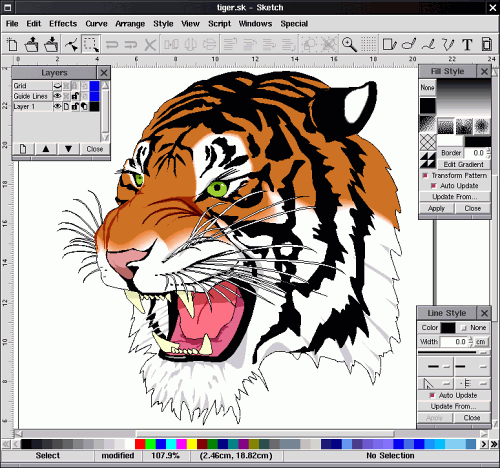
Skencil, formerly called Sketch, is a free vector graphics editor, released under the GNU Lesser General Public License. Running on GNU/Linux and other UNIX-compatible systems, it is a flexible and powerful tool for illustrations, diagrams and other purposes. A somewhat rare feature of Skencil (for a drawing program) is that it is implemented almost completely in Python, a very high-level interpreted language. Python is powerful, object-oriented, and yet easy to use. The rest of the program is written in C for speed. The software is now in version 0.6.17. It has versions compatible with Linux on the i386, DEC Alpha, m68k, PowerPC and SPARC architectures, as well as with FreeBSD, Solaris, IRIX64 6.4 and AIX.
In addition to the standard features that you expect from a vector drawing program, Skencil also has more advanced features, such as the possibility of bending text along a path. The current stable release is 0.6.17. Skencil is quite usable already, even for production use. The low version number is mainly due to a lack of some important features, such as good text support.
Some of its other distinguishing features are that rectangles, ellipses and bezier curves (in addition to ordinary horizontal and vertical lines) can be used as guides; text can be converted to bezier curves, though only if Skencil has access to the PostScript Type 1 font files (pfa or pfb); and blend groups allow for automatically updated interpolations of arbitrary objects. Download Skencil.
Scribus (Mac, Win, Linux, OS/2)
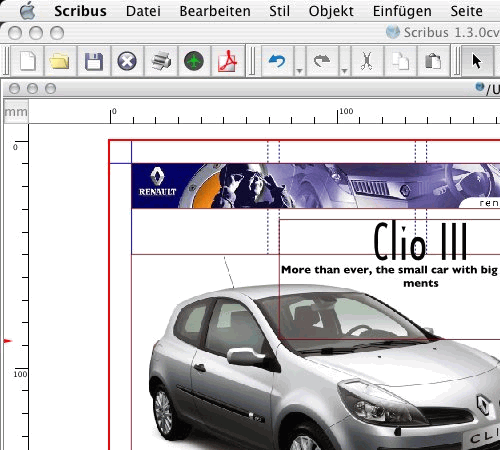
Scribus is a desktop publishing (DTP) application. Scribus is an open-source program that brings professional page layout to Linux/Unix, Mac OS X, OS/2 and Windows desktops with a combination of “press-ready” output and new approaches to page layout. Scribus is designed for flexible layout and typesetting and allows you to prepare files for professional-quality image-setting equipment. It can also create animated and interactive PDF presentations and forms. Example uses include writing small newspapers, brochures, newsletters, posters and books. Scribus supports professional publishing features, such as CMYK color, separations, ICC color management and PDF creation.
Scribus is known for its broad set of page layout features as compared with leading commercial applications, such as Adobe PageMaker, QuarkXPress and Adobe InDesign. Scribus supports most major graphic formats in addition to SVG. Although written in C++, it has built-in scripting using Python. It is available in more than 24 languages.
It also comes with a lot of support options to help you achieve the best results. There is an enthusiastic and friendly community around Scribus that assists beginner and pro alike through a mailing list, IRC channel, wiki, contracted support and a bug tracker.
VRR (Linux, Win)
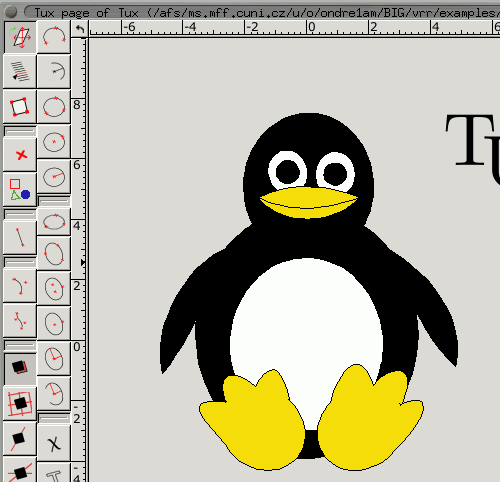
VRR was started as a student project in the Faculty of Math and Physics at Charles University, Prague, Czech Republic. In September 2005, it was defended successfully. However, it is still being developed in the author’s free time.
The goal of the VRR project is to create a vector image editor designed especially (but not only) for making illustrations of mathematics articles. Its main features are many types of geometric objects and the preservation of their dependencies, cooperation with TeX, scripting in Scheme, real-size dimensions and support for a wide range of file formats (including PS, EPS, PDF and SVG). It latest version is VRR 0.9.4. You can also download the user’s manual here.
Summary. Although TeX text objects are one of VRR’s main features, you do not need to know TeX to work with VRR or to create valuable and sophisticated images with it. TeX is a typesetting system written by Donald E. Knuth that was “intended for the creation of beautiful books, and especially for books that contain a lot of mathematics.” Download VRR.
ConceptDraw PRO (Win)

ConceptDraw PRO is powerful business and technical diagramming software that supports the creation of business diagrams, flowcharts, network diagrams, floor plans, technical drawings, home and office layouts and the like. ConceptDraw 7 charts can be exported to a variety of file formats, including images, CAD documents and HTML. It also supports importing and exporting of Microsoft Visio XML files.
With ConceptDraw PRO, you can design professional-looking graphics, diagrams, high-end flowcharts, floor plans, engineering drawings and other intricate illustrations in minutes. ConceptDraw’s libraries include thousands of scalable objects. You can maintain business processes with clear visual documentation and present and communicate information in a clear and vivid way.
Through ConceptDraw Office, ConceptDraw PRO provides you with the tools you need to generate reports, documentation and presentations that entirely reflect project performance. It is a comprehensive tool that can be used to create a Work Breakdown Structure (WBS) and to track a project’s status on an intelligent dashboard. It has the huge set of vector drawing tools that can compete with any professional illustration program. It runs on Microsoft Windows and Mac OS X. Its latest version is 7.2 and costs $299.
Summary. ConceptDraw Professional is designed for people who need to create high-end flowcharts, engineering drawings, and other intricate illustrations. ConceptDraw’s libraries include thousands of scalable objects. If you have enough resources for a powerful leading vector graphics editor, ConceptDraw is definitely an option worth considering.
ZeusDraw (Mac)

ZeusDraw is a new vector drawing program with a fluid, graceful interface, great brushes and a host of other features. It requires Mac OS X 10.4 or higher. ZeusDraw is a Universal Binary and can be run on Intel or PowerPC. Its current version is 1.3.1.
Quartz and Cocoa let ZeusDraw show you what you are doing as you do it. When you move or rotate an object, you see the object move or rotate, not its bounding box. ZeusDraw has a selection of vector brushes (smooth, shaded, multi-hair), and it also has an object brush that allows you to paint with any piece of artwork, either vector or bitmap. ZeusDraw simplifies bezier curves. With ZeusDraw’s path tools, you enter control points in order along the path (which is more logical and intuitive because the shape of a polygon made by the control points is a rough indicator of the shape of the curve). ZeusDraw comes with a version of the Shades Color Picker built in. In addition to working with normal full-color bitmaps (JPEG, TIF, PNG, GIF and BMP), ZeusDraw can use grayscale bitmaps as stencils.
Chromatic Bytes has announced the release of ZeusDraw Mobile for the iPhone and iPod touch. It’s available for purchase and downloading now from the App Store for $9.99. ZeusDraw costs $90.
MagicTracer (Windows)

MagicTracer is a raster-to-vector converter for Windows. It includes both raster and vector editing tools. MagicTracer includes support for image scanners.
If you are a construction manager or architect who wants to import scanned blueprints or sketches into your favorite CAD program, or a sign maker who wants to convert an image file into shapes that you can cut out with a vinyl cutter, then MagicTracer is for you. MagicTracer offers three main categories of tools for manipulating raster and vector data: image, raster and vector.
In the latest version of MagicTracer, vector entities now have their own color property. All of the draw commands in vector mode use the current color for newly created entities, just like the draw commands in image mode. Its cost is $60. The online-alternative is a free tool vectormagic that converts bitmap images to EPS, SVG, PDF, and PNG formats.
NodeBox (Mac)
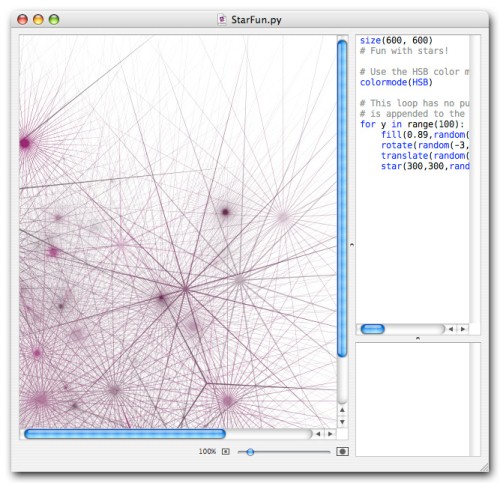
NodeBox is a Mac OS X application that lets you create 2-D visuals (static, animated or interactive) using Python programming code and then export them in PDF or as a QuickTime movie. NodeBox is free and well documented.
NodeBox can generate forms such as rectangles, ovals, stars, arrows and also bezier paths in general. It supports images (even PDF) and text (with line wrapping). NodeBox is a “state machine.” As such, it is easier to understand by people who have no experience in programming.
Although it has a limited set of commands, NodeBox has full Python support, making it a useful tool for advanced Python programmers as well. You can deconstruct paths into contours, insert points at arbitrary positions on a path and construct paths based on a list of points. You can apply all of these transformations to text as well.
NodeBox can generate PDF documents that can easily be certified (CMYK colors, embedded fonts and images). It also generates QuickTime movies. The application targets designers and has an easy set of state commands that is both intuitive and creative. It is essentially a learning environment and an automation tool.
Tgif (Linux)

Tgif is an Xlib-based interactive 2-D drawing tool under X11, available on Linux and most Unix and Unix-like platforms. It was developed in 1990 and is free software released under the QPL license. Tgif saves its drawings in a Prolog-based plain-text file format. Partly because it is based on Prolog, there is little support from other programs for reading the Tgif file format.
Tgif is one of the few free drawing programs that has not only a ruler but a usable grid. Fonts are represented as PostScript font names. Originally, it was possible to print Tgif drawings in batch mode without using an X display; however, this changed during the 4.1 versions. Currently, printing drawings requires running Tgif on an X display unless the drawing only uses Times Roman, Helvetica, Courier or Symbol fonts. The current release of Tgif is version 4.1, patch level 45.
You can download it here
Tplot (Win)

Turbo Plot is a freeware GUI application that produces 2-D and 3-D plots of functions and data, under Windows XP or newer. Like any drawing application, TPLOT can save images, and it can also save vectors. As well, TPLOT can save TPLXML files, which are text files that contain what you have created in text commands so that you can load them easily or edit them manually. TPLOT can save in SWF (Adobe Flash), which is an animated vector file format. This allows you to create high-quality non-aliased graphics with animation.
TPLOT requires Windows XP, Windows 2003 Server, Windows Vista or newer, and also DirectX 9 or later (if you plan to work with a DirectX 9 drawing). As a precaution, Turbo Plot will not run on Windows 95, Windows 98, Windows NT 4.0, Windows ME or Windows 2000.
ZCubes (web-based)

ZCubes is a free Web-based software that allows you to create HTML-pages, spreadsheets, presentations, drawings, albums and portals. ZCubes’ platform is a multi-functional platform that provides through a single interface large sets of functions that are typically delivered in separate applications.
You can instantly create Web pages using ZCubes online or on your desktop by using drag-and-drop functionality. The key differentiator is the omni-functionality: ZCubes is an immersive platform in which you can create and edit content while you browse. It combines features of several “document-creation” software apps available on the market and is provided on the Web, accessible to all.
The main advantage of the editor is in the mixing of slides, drawings, document pieces, pictures, music and videos (each as separate ZCubes) all in one page (named the “ZSpace”). The e-cards feature in ZCubes lets users upload media, such as videos, images and Zpaint drawings, to their greeting cards and add some handwriting.
Sodipodi (Win, Linux)
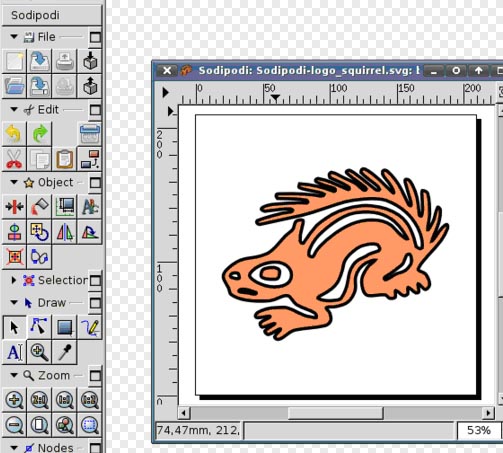
Sodipodi is general vector illustrating application for Linux/Unix and Windows. It uses W3C’s SVG as its native file format and in-memory image format and can do many neat things. Drawing tools include rectangles, ellipses, freehand drawing, text objects, imported bitmaps, fills and outlines. It is licensed under the GNU General Public License (GPL), Public Domain. The operating systems it supports include all 32-bit MS Windows (95, 98, NT, 2000, XP), all BSD platforms (FreeBSD, NetBSD, OpenBSD, Mac OS X), all POSIX platforms (Linux, BSD, UNIX-like systems) and Linux.
The user interface is similar to that of a regular drawing program. Both vector and bitmap objects can have alpha transparency and can be arbitrarily transformed. Sodipodi supports multiple opened files and multiple views per file, and it prints and exports to PNG bitmaps. Sodipodi is no longer under active development.


 Agent Ready is the new Headless
Agent Ready is the new Headless



 SurveyJS: White-Label Survey Solution for Your JS App
SurveyJS: White-Label Survey Solution for Your JS App

